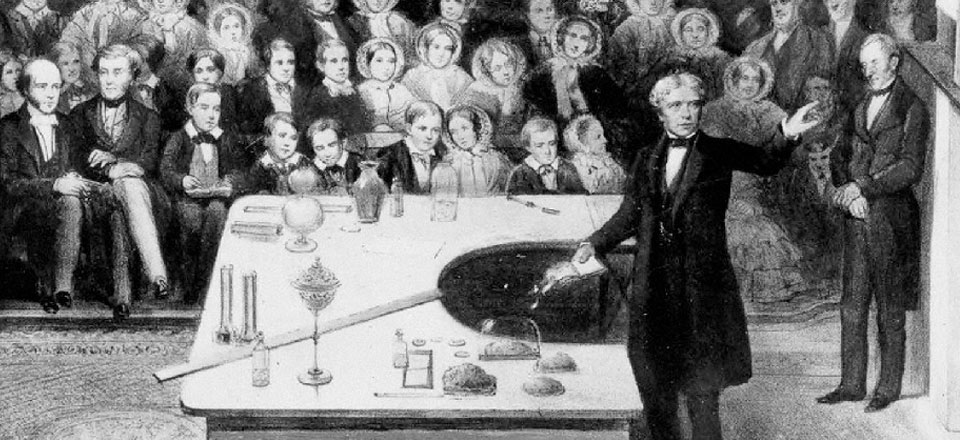

Faraday Business Centre is named after Michael Faraday, a British chemist and physicist who contributed significantly to the study and understanding of electromagnetism and electrochemistry.
The father of electromagnetism
Faraday Business Centre was built as the headquarters to the Midlands Electricity Board. It is therefore appropriate that it is now named after the man best known for his work on electromagnetism and electrochemistry, and one of the most influential scientists in history.
In 1812, Faraday attended a series of lectures given by the chemist Humphry Davy. He subsequently wrote to Davy and in 1813 was appointed as his chemical assistant at the Royal Institution. Following an 18 month tour of Europe, during which he met many influential scientists, Faraday continued to work at the Royal Institution and in 1821, published his work on electromagnetic rotation, which was the principle behind the electric motor.
In 1826, Faraday established the Royal Institution's Friday Evening Discourses and Christmas Lectures, both of which continue to this day. He gave many lectures himself, establishing his reputation and an outstanding scientific lecturer.
In 1831, Faraday began a series of experiements in which he discovered electromagnetic induction. His breakthrough came when he wrapped two insulated coils of wire around an iron ring and found that, when passing a current through one coil, a momentary current was induced in the other coil. He also discovered that moving a magnet through a coil of wire caused an electric current to flow through the wire. He would later use this principle to construct the first electric dynamo, the predecessor of modern power generators and the electric motor.
Towards the end of his career, Faraday also proposed that electromagnetic forces extended beyond the boundaries of conductors, with a concept of flux lines emanating from charged bodies and magnets as a way to visualise electric and magnetic fields. His idea was initially rejected by his fellow scientists, but following his death was eventually accepted by the wider scientific community; his conceptual model was crucial for the successful development of the electromechanical devices that dominated engineering and industry for the remainder of the 19th century.
View our gallery for more images of this great building.
Request a Brochure
If you would like to receive a PDF brochure detailing the benefits of housing your business at the new Faraday Business Centre, please click below and complete the request form.